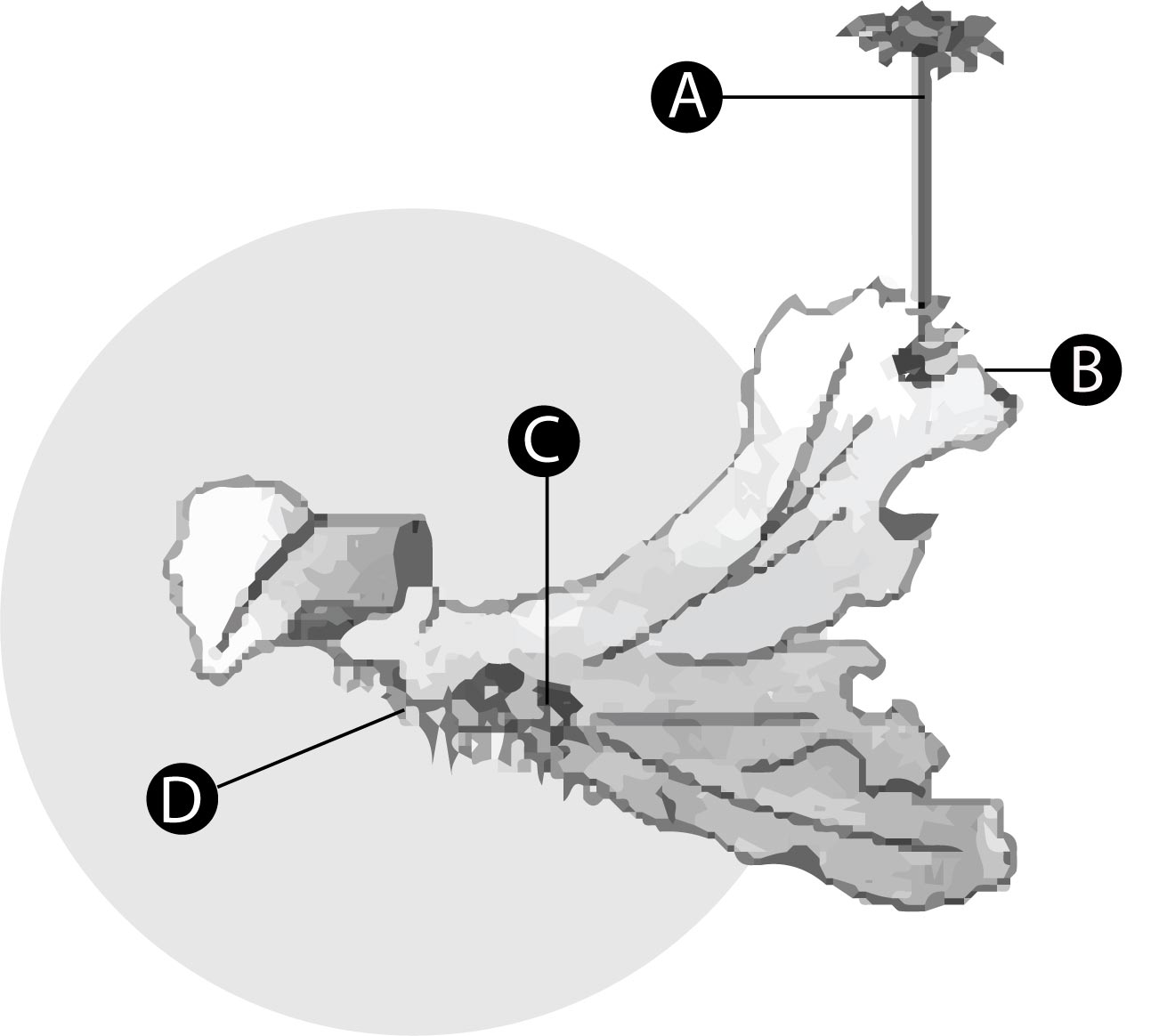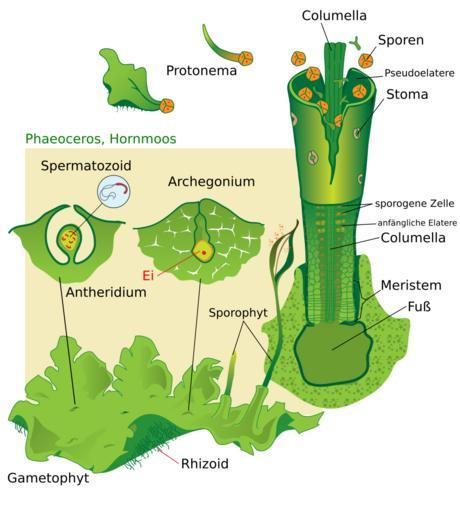
Examine the figure given below and select the right option giving all the four parts (A, B, C, and D) correctly identified are,

(A) (A) Archegoniophore, (B) Female thallus,(C) Gemma Cup, (D) Rhizoids
(B) (A) Archegoniophore, (B) Female thallus, (C) Bud, (D) Foot
(C) (A) Seta, (B) Sporophyte, (C) Protonema, (D) Rhizoids
(D) (A) Antheridiophore, (B) Male thallus, (C) Globule, (D) Roots

Answer
491.4k+ views
Hint: Archegonia are borne on the stalk or outer growth of the bryophytes and algae body. The protrusion that extends from the lower epidermal cells of bryophytes and algae performs the same function as of root hairs of vascular plants.
Complete answer:
This figure is of female Marchantia.
The label ‘A’ in the diagram is archegoniophore. ‘B’ is a female thallus. The Gemma cup is marked with ‘C’ and rhizoids with ‘D’.
Marchantia is a genus in the family of Marchantiaceae. Both male and female Marchantia have an umbrellalike stalked reproductive structure.
The hanging part below the epidermis is known as rhizoids. It is used for attaching and also helps in absorbing nutrients.

Archegoniophore is a stalklike structure on which female sex organs are borne.
The main body of plant or algae or fungi is known as a Thallus.
Thallus has a tiny cuplike structure known as a gemma cup. Gemma cup contains Gemmae which helps in vegetative reproduction.
Sexual reproduction in Marchantia is oogamous. Oogamous means a reproduction in which the male gamete is motile and females gametes are immotile. Water is essential for its reproduction.
The alternation of generation is seen in Marchantia. Alteration of generation is seen in that organism that has different sexual and asexual stages.
So, the correct answer is‘(A) Archegoniophore, (B) Female thallus, (C) Gemma cup, (D) Rhizoids’.
Note: Rhizoids are of two types: smoothwalled and tuberculate rhizoids.Though they both perform the same function of anchorage and absorbing nutrients but differ in their structure.
In Smooth walled rhizoids, both outer and inner layers appeared to be fully stretched.
In tuberculate rhizoids, circular dots are seen on the surface.
Complete answer:
This figure is of female Marchantia.
The label ‘A’ in the diagram is archegoniophore. ‘B’ is a female thallus. The Gemma cup is marked with ‘C’ and rhizoids with ‘D’.
Marchantia is a genus in the family of Marchantiaceae. Both male and female Marchantia have an umbrellalike stalked reproductive structure.
The hanging part below the epidermis is known as rhizoids. It is used for attaching and also helps in absorbing nutrients.

Archegoniophore is a stalklike structure on which female sex organs are borne.
The main body of plant or algae or fungi is known as a Thallus.
Thallus has a tiny cuplike structure known as a gemma cup. Gemma cup contains Gemmae which helps in vegetative reproduction.
Sexual reproduction in Marchantia is oogamous. Oogamous means a reproduction in which the male gamete is motile and females gametes are immotile. Water is essential for its reproduction.
The alternation of generation is seen in Marchantia. Alteration of generation is seen in that organism that has different sexual and asexual stages.
So, the correct answer is‘(A) Archegoniophore, (B) Female thallus, (C) Gemma cup, (D) Rhizoids’.
Note: Rhizoids are of two types: smoothwalled and tuberculate rhizoids.Though they both perform the same function of anchorage and absorbing nutrients but differ in their structure.
In Smooth walled rhizoids, both outer and inner layers appeared to be fully stretched.
In tuberculate rhizoids, circular dots are seen on the surface.
Recently Updated Pages
Master Class 9 General Knowledge: Engaging Questions & Answers for Success

Master Class 9 English: Engaging Questions & Answers for Success

Master Class 9 Science: Engaging Questions & Answers for Success

Master Class 9 Social Science: Engaging Questions & Answers for Success

Master Class 9 Maths: Engaging Questions & Answers for Success

Class 9 Question and Answer - Your Ultimate Solutions Guide

Trending doubts
State and prove Bernoullis theorem class 11 physics CBSE

What are Quantum numbers Explain the quantum number class 11 chemistry CBSE

Write the differences between monocot plants and dicot class 11 biology CBSE

Who built the Grand Trunk Road AChandragupta Maurya class 11 social science CBSE

1 ton equals to A 100 kg B 1000 kg C 10 kg D 10000 class 11 physics CBSE

State the laws of reflection of light




